We have provided a list of the best ways to print folder and directory content in Windows easily. Use these tips to customize the way the printed folders are displayed and structured.
Usually, it is easy to print a folder that is visible on the screen by taking a screenshot and using an image editing application. You can also use the screen capture application itself to print the image. Unfortunately, if you need to print the entire folder tree and it contains tens or hundreds or more sub-folders the task becomes quite hard. Follow this guide to print the folder tree easily and for free.
List of Best Ways to Print Folder and Directory Contents
- Print Folders List by Taking a Screenshot
- Export Folder content from CMD (Command Line)
- Print Folder Tree From Command Line Using The “Tree” Command
- Print Directories Using the Folder Size Application
- Steps to Print Folders
- Export and Print Folders as CSV, XLS, or TXT File
- Save Folders and Files Snapshot
- List Folder Using JR Directory Printer
1. Print Folders List by Taking a Screenshot
As I already mentioned, it is easy to use Windows Explorer to take a screenshot of the folder tree. You can use the screen capture tools that are built-in in Windows to capture and print the desired region. Try also the “Prt Scr” button to capture the entire screen and you can paste it into your favorite image editing application simply by pressing CTRL+V. You should crop the captured image as it includes the entire screen. If the folders that you want to print can not fit on the screen, you can make multiple captures and print them on separate pages.
Above is an example where very long paths take too much horizontal space and such an approach may not always be convenient.
2. Export Folder content from CMD (Command Line)
There is also the possibility to print the folders from a command line using the DIR command. From the above example you can list the Unicode folder using the command below:
dir /s /AD unicode
To do this press WIN+R (RUN) and type CMD in the edit box.
The dir command lists all files and folders in the current folder. Use the /S flag as it denotes that all sub-folders of the specified folder should be listed. Set the /AD flag to denote that only the FOLDERS should be listed without the file names that are contained inside. The command lists the folders, but the output is not very readable. Furthermore, the UNICODE folder names are not listed properly and question marks are printed instead, which is very strange to me. In the screenshot example above it is visible that those test folders include some non-Latin letters for test purposes. So if you need to print non-Latin file names this may not be a proper solution for you.
You can extend the same command to print the content of the folder and all its sub-folders to a text file instead of listing them in the console:
dir /s /AD unicode > FoldersList.txt
Execute the modified command and the results will be saved in a file named FoldersList.txt which is stored in the same folder. The file is in text format hence you can load it in Notepad or Word to print it.
3. Print Folder Tree From Command Line Using The “Tree” Command
Another much better solution for printing the folders is to use the Tree command. Modify the command as follows:
tree unicode > FoldersList.txt /A /F
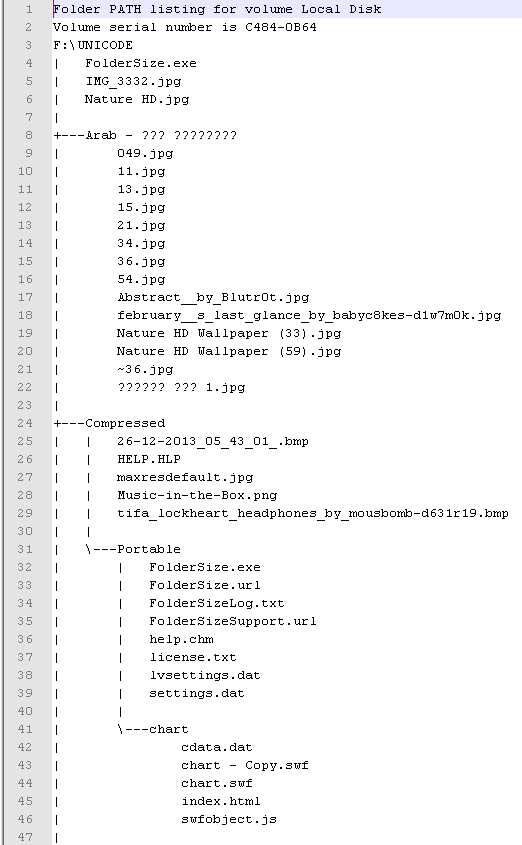 As a result, the list is much better and the folder structure is easy to understand. Similar to the last command that we used, the Unicode symbols are replaced with question marks. That is a real mystery to me as Windows should be able to handle those. I will dig this deeper and post an update regarding the problem. If you have a clue, please post it in the comments. Nevertheless, if you do not use non-Latin symbols, those are some simple ways to print directory listings.
As a result, the list is much better and the folder structure is easy to understand. Similar to the last command that we used, the Unicode symbols are replaced with question marks. That is a real mystery to me as Windows should be able to handle those. I will dig this deeper and post an update regarding the problem. If you have a clue, please post it in the comments. Nevertheless, if you do not use non-Latin symbols, those are some simple ways to print directory listings.
4. Print Folders Using the Folder Size Application
Folder Size is a very powerful tool that can list all folder and file sizes on your computer or network. Printing folders and files is the least that it can do for you. It will handle all the issues that we have faced with the other methods that I described. Folder Size is available for free, but printing folders and files is available only in the licensed version. You can use the free version to visualize the distribution of your disk space and remove unused large files. Use the beautiful charts and the folders and file lists that are sorted by size to easily spot the space hogs.
While Folder Size is a great free utility we will focus on its folder printing capabilities.
5. Steps to Print Folders
- Use the scan buttons or file menu to scan the desired folder or drive. The tool can scan network locations and external drives too.
- Right-click the desired folder and click “Expand All Subfolders”. There are filtering options and an option to remove a folder from the tree. Therefore you can adjust the results in order to print only the data that you need.
- Click File->Print Folder Tree
- This will display the Print Preview window where you can apply modifications to how the printed folders will look like. Here is the preview window itself:
- If the folder tree is too large the folders list will not fit on a single page horizontally. Therefore the application will automatically expand the print area for you and will distribute it over several pages horizontally. There is an option to limit the print area to one horizontal page too.
- Tweak the options and set things the way you like them. Finally, you can store the result as a PPV (Preview File), PDF File, or multi-page TIFF file, or print it on paper using the print buttons.
6. Export and Print Folders as CSV, XLS, or TXT File
Folder Size provides robust features for printing the contents of a folder, but if you need to provide extra formatting or apply special changes to the list, the best thing to do is to export the results. You can then edit them in external applications like Microsoft Excel or your favorite text editing application.
There are multiple export options in Folder Size. It can export both folders and files or a mix of both. Exporting the charts as an image is also available.
Use “Export As…” to export all the data that is listed in the application. This includes both files and folders. If you do not need the list of files, you can disable it in settings before running a scan. You can limit the depth of the scan to a certain level if necessary.
“Export Details View…” will export the list on the right side of the application. It includes all the files and folders in the currently selected folder from the tree view on the left side. You can configure the details to list “Largest file”, “Largest folders”, “Largest files and folders”, oldest and newest files and folders, and the items with the longest paths.

Folders List and Files List Filtering
The combinations and possibilities are endless if combined with the filtering features which include filtering by folder or file name, sizes, dates, attributes, and every other property that a file or folder has.
7. Save Folders and Files Snapshot
Another feature of Folder Size that may come in handy for you is the fact that it can save all the scanned data in an internal project file. The project files are very compact and internally compressed and can hold information for millions of files without occupying too much disk space.
As the file and folder structures are changing constantly, if you can not print the current state immediately you can do it on a later date by storing the snapshot of the current state of the drive, in a project file. You can remove folders and files from the tree or apply filtering options before running a scan. Therefore, the stored project file will contain only the files and folders that you need.
You can use the project files to catalog the file and folder structure or to monitor changes to the file system. The project file contains also information about the file and folder sizes, which makes it easy to spot rapidly growing folders.
8. List Folder Using JR Directory Printer
The free JR Directory Printer Utility allows you to print a listing of every file contained within a directory and/or subdirectory.
The tool creates the “dirprint.txt” file that contains the folder and files list. It automatically opens the file in Notepad. Every time you click the “Start” button, the tool will create the file in the “JR Directory Printer” installation folder.
Options:
Check the Recurse Sub-directories option to see a complete list of all subdirectories and all files in all directories.
The Lowercase Filename option will force all file names into lowercase regardless of the actual file name.
The Dos style filename option will limit the file name length to 8 chars.
Display Sub-directories will result in a list of all subdirectories contained under the selected directory along with a list of all individual files contained under the root directory. It will not list all subdirectories or individual files contained in the main subdirectories. To see a complete list of all subdirectories and all files in all directories, you would check the Recurse Sub-directories option and click on the Start button. This would rewrite the”dirprint.txt” file using the new options.
You can limit the length of file names so that they fit properly in the list. By default, this value is 35 chars.
You can check/uncheck the Display Size, DateTime, and Attributes options to list/unlist the file size, modified date/time, and file attributes (a – Archives, r – Read Only, s – System, h – Hidden).
Final Thoughts
Above all Folder Size is free and you can download it to check if it will suit your needs. You can use it to find and list all file and folder sizes. Even more, if you do not want to pay for the premium features like printing or network scan, it will do a very good job and help eliminate unused large files. The features included in the free version are sufficient in order to organize the disk space.
Did you discover an easier way to print folder trees or file lists? Message me in the comments section below – I will be glad to hear your solutions.
Folder Print Related Questions
This article also relates to: Cmd List Folders, Digital Print Files, Directory List & Print, Directory Tree List Maker, Directory Tree Windows 10, Export List Of Files In Folder And Subfolders, How Do I Print A List Of Files In A Folder Windows 7, How Do I Print A Listing Of Folders And Subfolders In A Directory?, How To Create A Text File List Of The Contents Of A Folder. How To Print Files In Order. Is There A Way To Print A List Of Files In A Folder. Karen’S Directory Printer. List All Files In A Directory Linux, List Directory To Txt.

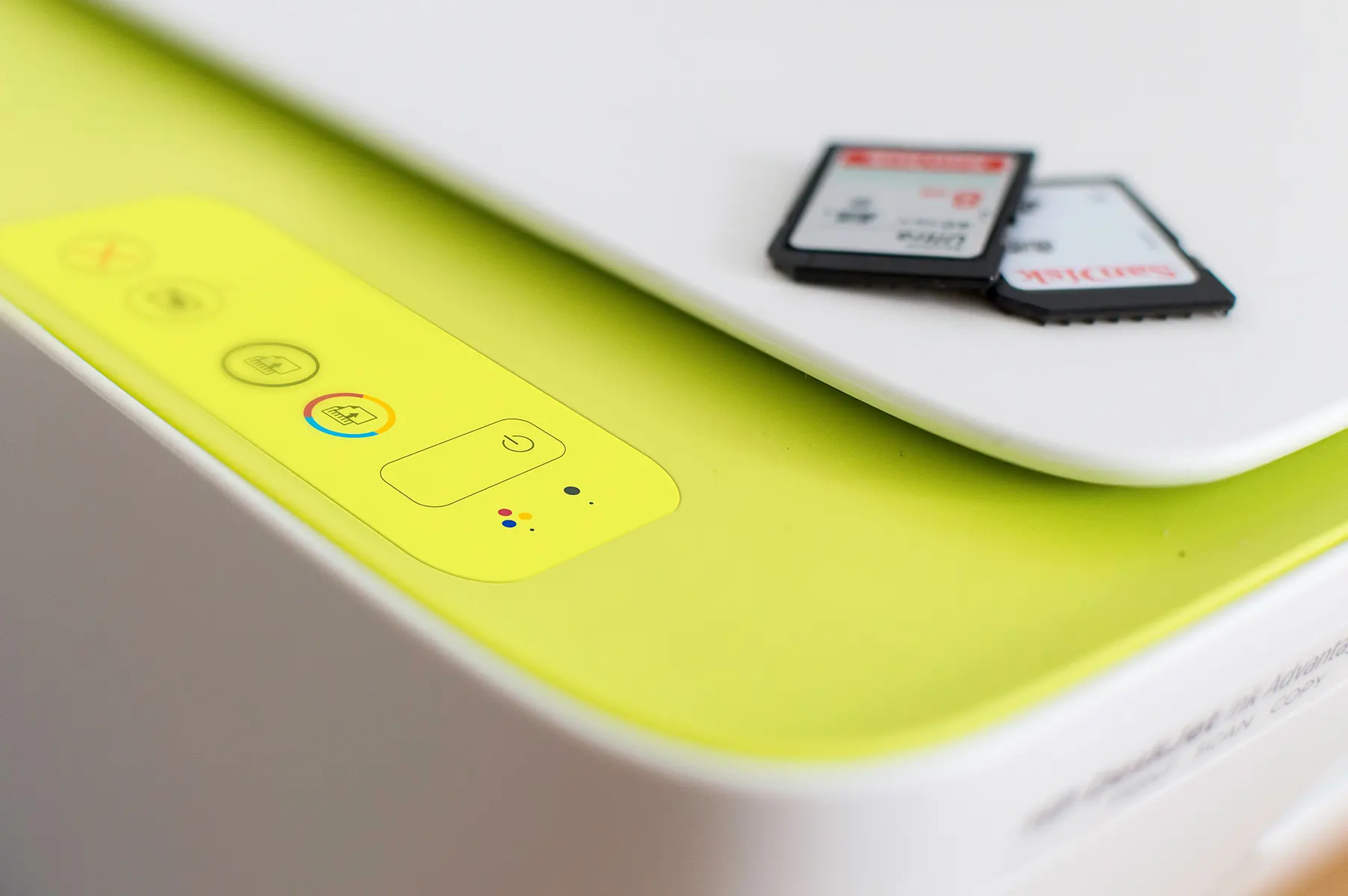
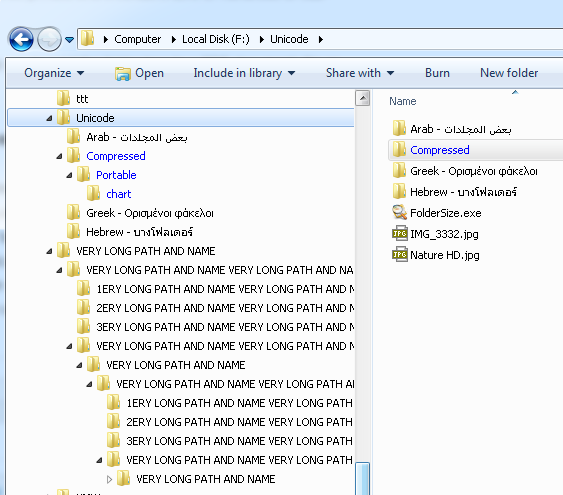
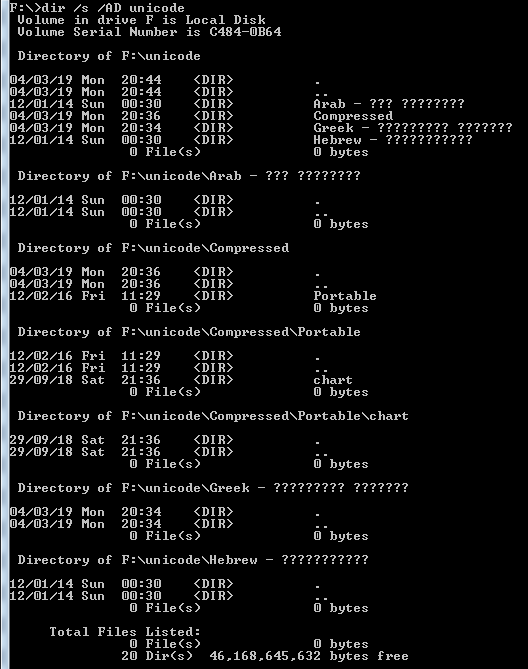

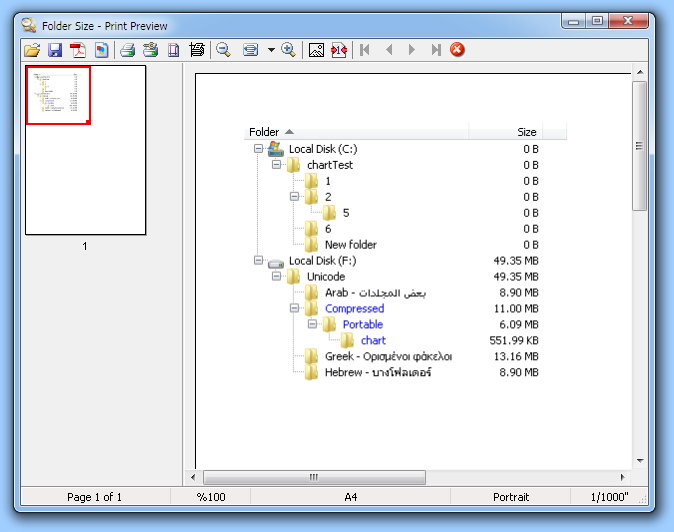
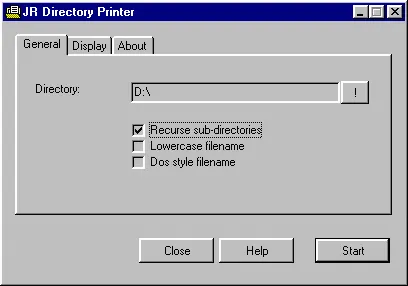
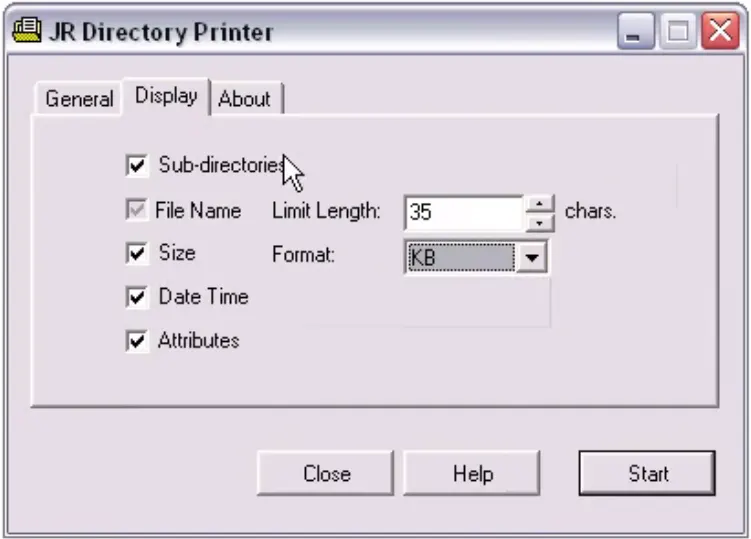
Pingback: Print Folder Sizes, Folder Tree, File Sizes, Largest Folders And Files
Pingback: Export Folder Structure or Folder List to Excel, CSV or XML - Folder Size
Thank you. tree command worked great for folder, sub folder, file names and size. My question, I have approx 15,000 jpg photos all in folder/subfolder set up. Is there a way to print in thumbnail size the (black and white) actual file contents ( photo ) within each sub folder
Pingback: Find Long Paths & Long File Names
How do you list only the file names? I hav no use for directories and that is explained here, so what gives just the directory names and extensions??
You can use the tool or the DIR command.
The print feature in [Folder Size Tool] adds a convenient layer to the robust disk space analysis capabilities. Being able to print detailed folder contents helps in creating tangible records for offline reference or documentation. While the primary strength lies in its intuitive visualization of disk space usage, the addition of a print feature enhances the tool’s versatility. Users can now easily generate hard copies of folder contents for various purposes, contributing to a more comprehensive file and folder management experience.
For LinuxTerminal:
Open a terminal.
Navigate to the folder using the cd command.
Type ls > output.txt and press Enter. This will create a text file (output.txt) with the list of files and folders.
Open the text file and print it.
The ability to print folder contents is a valuable feature that enhances organization and accessibility. Printing folders provides a tangible, offline reference for the contents of a directory, offering a quick overview without the need to access a computer. This can be particularly useful for creating physical documentation, sharing file lists with colleagues, or maintaining records for offline reference. It adds a layer of convenience and flexibility to digital file management, ensuring that crucial information is readily available in various contexts. Whether for archiving purposes, collaborating on projects, or simply having a hard copy backup, the option to print folders brings an extra level of versatility to effective file organization